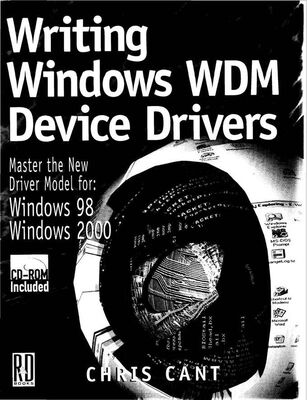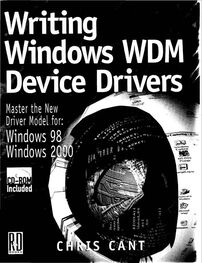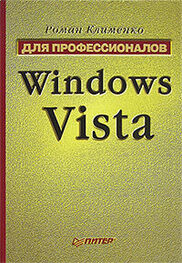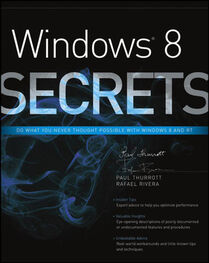A driver has one main initialization entry point — a routine that you must call DriverEntry. It has a standard function prototype. The kernel calls your DriverEntry routine when your driver is loaded, as is shown in Chapter 4.
Subsequently, the kernel may call many other routines in your driver. These routines are given the general name of callbacks. You tell the kernel the name of the routine and later on the kernel calls the routine back in the right circumstances. For example, if you want to handle interrupts, you must tell the kernel the name of your Interrupt Service Routine (ISR) callback. Each callback has a standard function prototype, appropriate for the circumstance in which it is called.
Table 2.1 lists all the driver entry points and callbacks. I will briefly describe these routines in this chapter and fully explain them later in the book, so do not worry about the details yet. New drivers can also provide a Common Object Model (COM) interface to the kernel, a defined series of routines that the driver implements.
Table 2.1 Standard driver entry points and callback routines
| DriverEntry | Initial driver entry point. Sets up main callbacks. |
| I/O Request Packet (IRP) handlers | Called to process the IRPs that you wish to handle. |
| Unload | Unload the driver. |
| AddDevice | A new Plug and Play device has been added. |
| StartIo | A callback to handle IRPs serially. |
| Interrupt Service Routine (ISR) | Called to handle a hardware interrupt. Usually schedules a Deferred Procedure Call to do most interrupt servicing. |
| DpcForIsr | Deferred Procedure Call routine. Starts off another interrupt-driven transfer or completes an I/O request. |
| Critical section routine | Called to synchronize execution on one processor with no interrupts. Called by low IRQL tasks to interact with hardware |
| Cancel | Called to cancel an IRP |
| Completion | Called when a lower-level driver has completed processing an IRP. This lets the current driver do more work. |
| AdapterControl | Called when a DMA adapter channel is available. |
| ControllerControl | Called when a controller becomes free. NT and W2000 only. |
| Timer | A one-second timer callback. |
| CustomTimerDpc | For time-outs of less than one second. |
| CustomDpc | Usually used to handle work queues. |
| Reinitialize | Called if a driver takes a long time to initialize itself. |
| ConfigCallback | Query device hardware description callback. NT and W2000 only. |
| Plug and Play Notification | Called to notify you when devices have arrived, when the hardware profile changes, or when a device is being removed. |
| Callback | W2000 callback object handler |
Dispatch Routines
A driver's DriverEntry routine must set up a series of callbacks for processing IRPs. It also sets the Unload, AddDevice, and StartIo routine callbacks, if these are needed. Table 2.2 shows the common Win32 device I/O functions and their corresponding IRPs. For example, a call to CreateFileends up as a create irp sent to your driver.
Table 2.2 Dispatch routine IRPs
| Win32 function | IRP |
|---|
| CreateFile | Create IRP |
| CloseHandle | Close IRP |
| ReadFile, etc. | Read IRP |
| WriteFile, etc. | Write IRP |
| DeviceIoControl | IOCTL IRP |
| Internal IOCTL IRP |
One common IRP cannot be generated from user mode code [1] There are several other IRPs which are only generated by the kernel in response to kernel related events. For example, when the system decides to powers down, a Power IRP is sent all drivers.
. The Internal IOCTL IRP can only be generated from within the kernel. This allows drivers to expose an interface that cannot be used from Win32. These Internal IOCTLs are often made available by generic drivers. For example, the Universal Serial Bus (USB) class drivers only accept commands in Internal IOCTLs; they do not support ordinary reads and writes.
The handlers of the Create, Close, Read, Write, IOCTL, and Internal IOCTL IRPs are commonly called dispatch routines because they often perform only some initial processing of the IRP, such as checking that all the parameters are valid. They then dispatch the IRP for processing elsewhere within the driver. Quite often, IRPs need to be processed serially so that the driver interacts with hardware in a safe way.
Processing in these basic routines is not quite as straightforward as you might think. Two or more IRP dispatch routines may be running "simultaneously". The problem is particularly acute in multiprocessor systems, but can easily happen when there is just one processor. For example, a dispatch routine on a single processor may block waiting for a call to a lower driver to complete. Or the dispatch routine's thread may run out of time in its execution slot. In both cases, another IRP dispatch routine may called. In due course, this second IRP will block or be completed, and work will continue on the first IRP. This is a common scenario and much of the difficult work of a driver is coping correctly with synchronization issues.
Creating Devices
How do devices come to exist in the first place? Quite simply, you have to create them, either in your DriverEntry routine or when the Plug and Play (PnP) Manager tells you to. In due course, you will delete the devices when your driver unloads or when the PnP Manager tells you that the device has been removed.
Most WDM device objects are created when the PnP Manager calls your AddDevice entry point. This routine is called when a new device has been inserted and the installation INF files indicate that your driver is the one to run. After this, a series of PnP IRPs are sent to your driver to indicate when the device should be started and to query its capabilities. Finally a Remove Device PnP IRP indicates that the device has been removed, so your device object must be deleted.
NT style drivers create their devices when they want to. Usually their DriverEntry routine roots around to find any hardware that can be represented as a device. For example, the system parallel port driver finds out how many parallel ports have been detected and creates an appropriate kernel device object for each one. The driver's unload routine is usually responsible for deleting any device objects.
How do user mode programs know what devices exist? You must make a symbolic link for each device object that is visible to Win32. There are two different techniques for making these symbolic links. The first is to use an explicit "hard-coded" symbolic link name. The user mode program must similarly have the device name hard-coded into its source [2] In NT and W2000 you can use the QueryDosDevice Win32 function to obtain a list of all symbolic links. I am not sure how useful this list is.
. The alternative is to use device interfaces, in which each device interface is identified by a Globally Unique Identifier (GUID). Registering your device as having a particular device interface creates a symbolic link. A user mode program can search for all devices that have a particular GUID.
Hardware Resource Assignments
Low-level drivers need to know what hardware resources have been assigned to them. The most common hardware resources are I/O ports, memory addresses, interrupts, and DMA lines. You cannot just jump straight in and access an I/O port, for example. You must be told that it is safe to use this port.
Читать дальше





